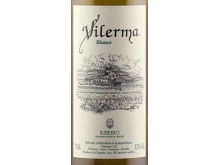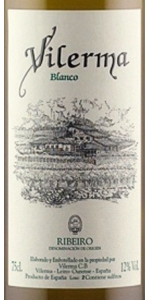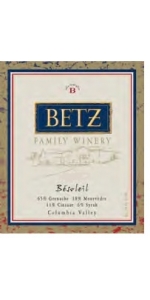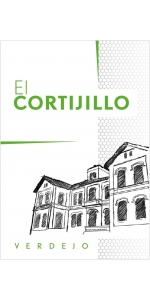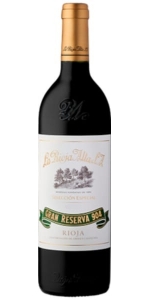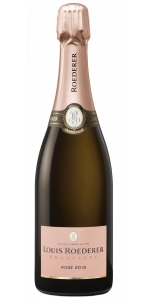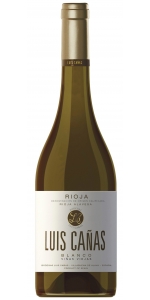Vilerma Blanco Ribeiro 2015
| Country: | Spain |
| Region: | Ribeiro |
| Winery: | Vilerma - Leiro |
| Grape Type: | Treixadura |
| Vintage: | 2015 |
| Bottle Size: | 750 ml |
Vilerma Blanco Ribeiro is made from 80% Treixadura, 6% Torrontes, 4% Godello, 4% Albariño, 3% Loureira and 3% Lado
Ribeiro blanco is produced from estate-grown grapes using traditional winemaking.
Pale yellow color with green highlights.
Intense white fruit aromas when young, it develops complex nuances after a few years in the bottle.
In the mouth it is ample, full and pleasant with a long and fruity finish.
Fermentation in Stainless Steel tank at controlled temperature.
Blending Detail:
- 49 % Grenache
- 20% Syrah
- 16% Cinsault
- 9% Mourvêdre
- 6% Counoise
Grenache speaks loudly in the Bésoleil with notes of pomegranate, red raspberry, and strawberry leaf. The Counoise and Cinsualt bring bing cherry fruit and blueberry notes to the table, complicated by pepper and garrique. Mourvedre donates a wild meatiness to the blend, and a purple hue. Syrah rounds things out, adding texture, and flesh to the palate.
Review:
The first vintage where they’ve pushed the bottling back to give the cuvee 16-18 months in barrel, the 2015 Besoleil is a dead ringer for a high-quality Chateauneuf du Pape and offers perfumed notes of herbes de Provence, kirsch, licorice and sweet spice. It’s medium to full-bodied, textured and fruit-forward, with a hedonistic yet elegant profile that’s going to evolve gracefully.
Robert Parker 91-93 Points
El Cortijillo Blanco La Mancha is made from 100% Verdejo
El Cortijillo Verdejo shows a pale straw green color. It is fresh and aromatic with floral notes, peach, crisp apple and tropical fruits. A mineral accent and herbal notes. Good acidity, it is refreshing on the palate, fruity and smooth.
La Rioja Alta Gran Reserva 904 is made from 90% Tempranillo, 10% Graciano
The 2015 Gran Reserva 904 Tinto offers great aromatic complexity, with notes of wild strawberry, red cherry, plum, blackberry and cranberry combined with aromas of tobacco, brioche, ground coffee, caramel, cedar and cinnamon blossom. The alcohol and acidity are elegantly balanced on the palate and its polished, gentle tannins and freshness provide a smooth and refined mouthfeel. Fine, delicate and very long aftertaste, that will continue to be rounded with time in the bottle, making this new Gran Reserva 904 a wine with great cellaring potential.
Especially recommended with all kinds of meat and stews, seasoned fish and desserts with chocolate or red fruit toppings. Perfect as an after-dinner drink.
Review:
A perfumed nose of plums, mulberries, mushrooms, caramel, sweet tobacco and sweet spices. Full-bodied with velvety, fine tannins and lively acidity. Balanced and supple with a creamy texture. Delicate and precise with a long, polished finish.
- James Suckling 97 Points
Salmon hue with bright red tints. Fine and energetic bubbles. A ripe, complex and youthful bouquet of slightly tangy red fruit (redcurrants, blackcurrants), ripe citrus (blood orange) and roasted cocoa beans. After some time in the glass, the wine reveals sappier, floral and sweet notes with a saline, almost briny, core. The first impression of the wine is of a generosity, softness and concentration. One has the sensation of biting into juicy, ripe fruit and blood orange, it is a fabulous aromatic explosion with luscious and slightly tangy overtones. The concentrated and dense body takes over and reinforces the impression of substance, of concentrated liqueur on the mid-palate. The finish stretches out, perfectly-honed, gradually revealing umami notes thanks to the precise and crisp mineral freshness.
Reviews:
The 2015 Brut Vintage Rosé is generous and demonstrative, bursting with aromas of peach, orange and pear mingled with hints of red berries, fresh bread and ginger. Full-bodied, layered and vinous, it's rich and enveloping, its textural attack segueing into an ample, fleshy core that's girdled by bright acids and enlivened by a pillowy mousse. Long and expansive, it's more generous and gourmand than its racier 2014 predecessor, but just as good.
-Wine Advocate 94 Points
This shows lots of cotton candy and peach, together with strawberries and cream. But not overpowering. Some cranberry, too. It’s medium-to full-bodied with fine bubbles and a lively finish. Dosage 8g/L. Drink now or hold.
-James Suckling 94 Points
Luis Canas Rioja Blanco is made from 90% Viura and 10% Malvasia (60+ years old vines)
Barrel fermented for 3.5 months in new French oak barrels.
Alcohol: 13,5º
Total acidity: 6,5 g./l.
Volatile acidity: 0,25 g./l.
PH: 3,40
Free SO2: 25 mg./l.
Grapes harvested in small boxes to be selected manually on the table, bunch by bunch.
Beautiful golden yellow, with bright lemony highly-luminous reflections. The nose is fine, with great elegance, combined with floral and fruity tones.
The palate is dry with a crisp acidity that gives its freshness and vivacity, a structured and tasty finish of ripe fruit.
We recommend that you taste it at 8°C.
It is appropriate to accompany shellfish, crustaceans and grilled white fish or fish stews. It also blends elegantly with rice, soft cheeses, blue cheeses, all kinds of mushrooms and fresh fruit.
Vilerma Blanco Ribeiro is made from 80% Treixadura, 6% Torrontes, 4% Godello, 4% Albariño, 3% Loureira and 3% Lado
Ribeiro blanco is produced from estate-grown grapes using traditional winemaking.
Pale yellow color with green highlights.
Intense white fruit aromas when young, it develops complex nuances after a few years in the bottle.
In the mouth it is ample, full and pleasant with a long and fruity finish.
Fermentation in Stainless Steel tank at controlled temperature.
"Green-tinged gold. Mineral-accented melon, peach and pear scents are complicated by hints of ginger and chamomile. Supple, expansive and seamless in texture, offering juicy orchard and pit fruit flavors that are braced and lifted by a jolt of bitter lemon pith. Closes silky and long, with subtle, lingering floral and mineral notes. - Josh Raynolds"
- Vinous (January 2017), 90 pts
"The white 2015 Vilerma shows really well for the warm vintage. It's mainly Treixadura (67%) and the rest a myriad other varieties including Godello, Albariño, Lado, Loureira, Caíño and Torrontés. It ferments in stainless steel and is bottled unoaked and without malolactic fermentation. It's very classic with notes of flowers, herbs, white fruit and a fresh, soft palate, with less acidity that 2014. Nicely balanced, approachable and easy to drink. 45,775 bottles produced. I also tasted a 2012 that was to die for, with great complexity, nuance and depth. Bravo! - Luis Gutiérrez"
- Robert Parker's Wine Advocate (Issue #232, August 2017), 91 pts
The Vilerma - Leiro Estate
Vilerma is owned by Arsenio Paz, who converted the local production from kiwi to grape back in the 1970's as there was a higher demand for Galician White Wine.
The Vilerma - Leiro Vineyards
There are 7 hectares (17.36 acres) of vines which mainly consist of the Ribeiro production varieties: Treixadura, Torrontes, Godello, Albariño and Loureira.
Treixadura grape: Distinguished, harmonious and rounded, Treixadura is the top white variety in the Ribeiro vineyards; it is perfectly suited to the area and is the expression of the full potential of the region. It is gradually being planted to take over from other varieties that are less suitable for the area. It is irreplaceable in the Ribeiro district and was the main variety responsible for the legendary reputation earned by the region's wines
The Ribeiro Denomination of Origin is in Southern Galicia, on the North-West edge of the province of Ourense, where the valleys formed by the Miño, Avia, Arnoia and Barbantiño rivers meet. It has 2,685 hectares of vineyards in the boroughs of Ribadavia, Arnoia, Castrelo de Miño, Carballeda de Avia, Leiro, Cenlle, Beade, Punxín and Cortegada, and in parts of the boroughs of Boborás, San Amaro, Toén, Carballiño and Ourense. The vineyards cover areas of varying altitudes, from 75 to 400 metres above sea level, in valleys and on sometimes very steep hillsides on terraces known as “socalcos” or “bocarribeiras” that follow the contours of the hills.
- back
Florence Cholet Meursault Blanc is made from 100 percent Chardonnay.
This classic Meursault offers expressive and complex aromas of white flower, white fruit, and herbal aromas. Bright acidity and minerality emerge on the palate from this beautifully balanced and structured white, followed by subtle hints of vanilla and toasted brioche nuances in a refreshing finish.
Pair with fresh Truffle Pasta, Beaufort Cheese, Pike Quennelles.
Dominique Piron Morgon Cote du Py is made from 100 percent Gamay.
The Morgon Cru is based in the heart of Northern Beaujolais. Côte du Py is the heart of Morgon, a little hill of very old blue stone rocks - the oldest soils of Beaujolais (around 430 millions years old), with a typical blue color.
Côte du Py has been known for centuries for being the best terroir of the village, producing long lived wines with strong structure and flavors.
Wines of the Côte du Py are very dark, profound and dense. Classic aromas of red berries, cherry, kirsh. Fruity, structured and mineral in the mouth with graphite flavors and spicy notes of black and white pepper. Wine can age up to 10 years.
Hand picked grapes are sorted manually and destemmed for 50 to 70%. Fermentation starts in concrete tanks and lasts for 18-25 days with remontages and pigeages. Then after pressurage starts the aging, for 2/3 in concrete tanks, and 1/3 in recent French oak barrels with batonages on fine lies only. After 10 month we do the blending, keeping only the best cuvees and best barrels, and do the bottling.
Pairs well with red meat like beef, duck and game (Hare, Dear, Wild Pork,…), cheses.

